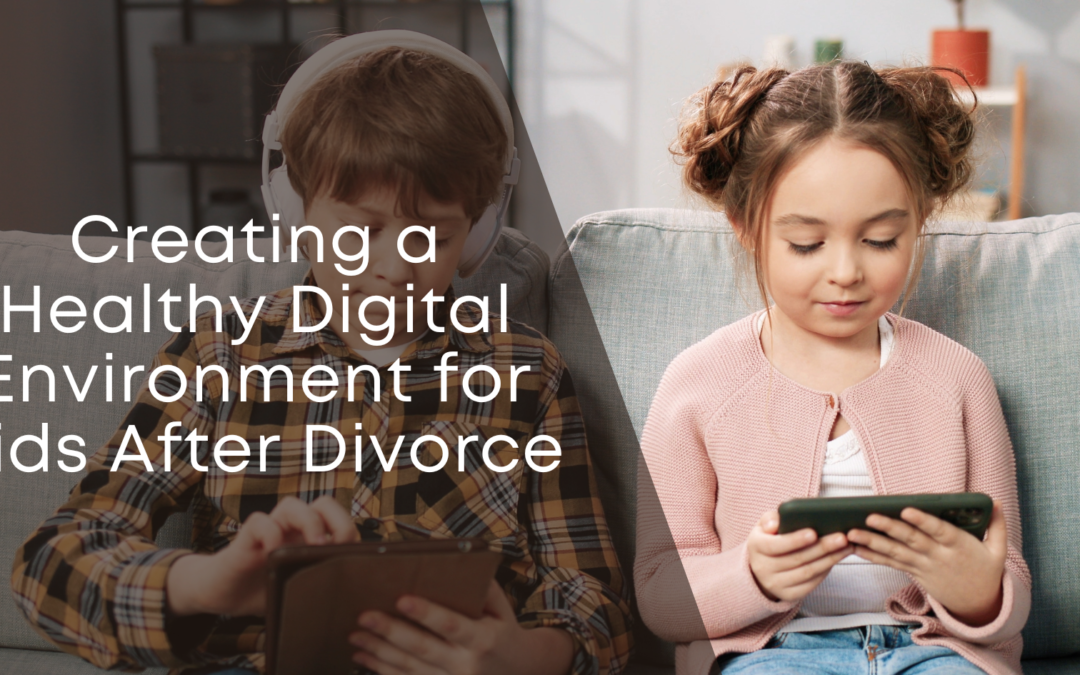In the aftermath of a divorce, parents often find themselves grappling with numerous challenges, one of the most pressing being how to navigate the digital landscape for their children. Imagine a scenario where both parents are at odds over screen time, social media use, and online safety measures. This conflict, if left unresolved, can lead to misunderstandings and further strain the already delicate post-divorce relationship. However, it doesn’t have to be this way. By understanding the digital decisions that need to be made and how to approach them collaboratively, parents can create a healthy digital environment for their children.
The Central Problem
Divorce brings about a multitude of changes, and one of the most significant yet often overlooked areas is the digital world of your children. Parents may have different views on appropriate screen time, leading to conflicting rules between households. The vastness of the internet poses safety concerns, making online safety overwhelming for a single parent. Additionally, parents often feel guilty about the impact of divorce on their children and may overcompensate by being lenient with digital rules.
Navigating digital parenting alone can be isolating, leaving parents uncertain about the best practices. It’s unfair that children should suffer from inconsistent digital boundaries due to their parents’ separation. Both parents have a responsibility to ensure their children grow up with healthy digital habits, regardless of marital status. However, it doesn’t have to be this way. There is a different approach that can help you navigate these digital decisions effectively.
4 Tips for Making Digital Decisions as Divorced Parents
I’m Steven Unruh, a divorce mediator with over 30 years of experience helping families find common ground. I understand the complexities of co-parenting in a digital age, and I’m here to provide you with practical advice to make this transition smoother for you and your children.
1. Establish Clear Digital Rules Together
Communication is key. Sit down with your co-parent and discuss your views on digital usage. Agree on screen time limits, acceptable online activities, and social media guidelines. Consistency between households is crucial for your child’s sense of security and routine. By working together to establish clear and consistent digital rules, you can provide a stable and supportive environment for your child, ensuring they understand and respect the boundaries set in both households. This collaborative approach not only benefits your child but also fosters a cooperative co-parenting relationship.
2. Implement Online Safety Measures
Use parental controls to monitor and limit your child’s online activity. Regularly review these settings to ensure they are up to date. Educate your children about online safety by explaining the risks of sharing personal information and how to recognize and avoid cyberbullying. Empower them to make smart digital choices. By implementing these safety measures, you can create a safer digital environment for your child, helping them navigate the online world responsibly and confidently. This proactive approach not only protects your child but also instills important values and awareness about digital safety.
3. Encourage Healthy Digital Habits
Balance is important. Promote a lifestyle where digital activities are complemented with physical activities, social interactions, and creative pursuits. Encourage hobbies that do not involve screens to ensure a well-rounded daily routine for your child. Set an example by modeling the digital behavior you want to see in your children. Show them how to use technology responsibly by limiting your own screen time and prioritizing face-to-face interactions. By fostering healthy digital habits and demonstrating responsible usage, you help your children develop a balanced approach to technology that supports their overall well-being.
4. Utilize Mediation for Disagreements
If you and your co-parent struggle to agree on digital rules, consider seeking professional help. Mediation can be an effective way to resolve conflicts and find common ground. As a divorce mediator, I can assist you in creating a comprehensive digital parenting plan that works for both households. This plan will ensure consistency and fairness in your child’s digital environment. Mediation not only helps in establishing clear guidelines but also fosters better communication and cooperation between co-parents, ultimately benefiting your child’s overall well-being and reducing the stress associated with digital disagreements.
Addressing Objections
It’s natural to resist changing your current digital practices, especially if they seem to work. However, consistency and collaboration between parents are crucial for your child’s well-being. Some parents avoid discussions about digital rules to prevent conflict. Remember, mediation can provide a safe space to address these issues constructively, ensuring that both parents can work together to create a stable and supportive digital environment for their child.
Take the First Step
Imagine a future where your children thrive in a balanced digital environment, where both parents are on the same page, and where digital conflicts are a thing of the past. By taking the step to establish clear digital rules, implementing safety measures, encouraging healthy habits, and seeking mediation when needed, you can ensure a positive digital future for your children.
Take the first step today. Contact me, Steven Unruh, to schedule a mediation session and start creating a harmonious digital parenting plan that benefits your entire family. Together, we can navigate the digital landscape and make the best decisions for your children’s future.


Recent Comments